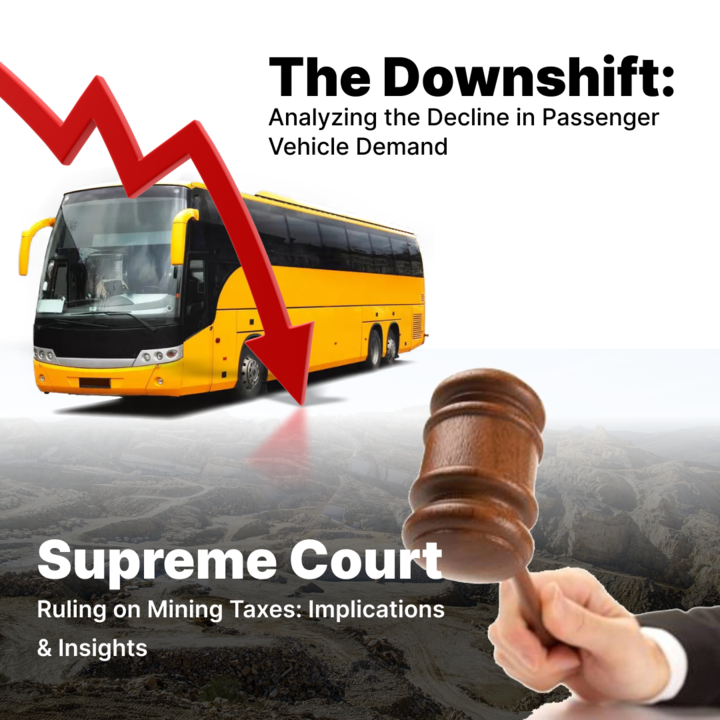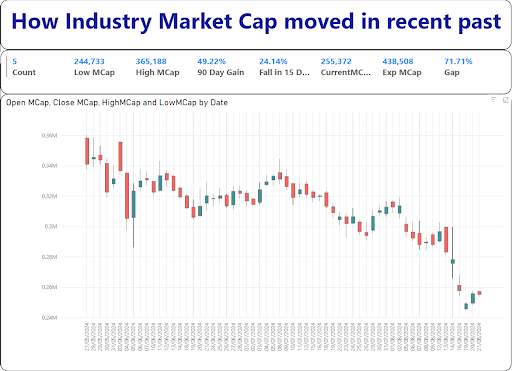Market Turbulence: Navigating Mining Taxes and Economic Downturn
This blog post tackles two recent developments impacting the market:
We’ll delve into the potential consequences for investors and explore some strategies to navigate this uncertainty.
We’ll delve into the potential consequences for investors and explore some strategies to navigate this uncertainty.

The recent Supreme Court verdict granting states the authority to levy taxes on mineral extraction has sent shockwaves through the mining industry. Investors and experts are assessing how this decision could affect mining companies’ profits.
Will these companies pass the increased costs onto consumers?
how will consumers react to potentially higher prices?
Impact of Retrospective Mining Taxes on Metal Stocks
Not only does it grant states the power to tax mineral extraction, but it also allows for retrospective taxation dating back to 2004.
This could result in massive tax liabilities for mining companies.
Companies consuming minerals extracted by them will either have to face supply disruptions or put up with additional levy of taxes by state governments.
Both are big negatives in the hands of metal stocks.
The graph on market capitalisation of metal stocks here displays the fear emanating from this.

Government interventions rarely have such a significant impact on markets, and this case is truly one of its kind. Unless central government more than compensates the impending levy by states by reducing their taxes, industry and all the subsequent consumers of products made out of it will face disruptions in manufacturing.
Currently, the central government’s ruling party is different from the majority of parties ruling state governments in India.
With the Supreme Court granting states the power to impose taxes retroactively from 2005, states now have a significant opportunity to collect substantial amounts of money.
Will states miss this opportunity?
It will be challenging for states to fully capitalize on this opportunity, but they will certainly make every effort to do so.
This situation presents potential damage to mining companies and the consumers of their product, as they may face significant financial burdens.
The supreme court has shown some leniency by waiving penalties, but companies are still required to pay interest on amounts due from 2005.
₹1 Lakh Crore Tax Liability: Impact on Investors and Share Prices
Assessments suggest that the total tax liability could reach ₹1 lakh crore.
While numerous public sector companies are involved, there’s minimal direct impact on the state governments since they are not majority shareholders.
However, individual investors could face significant challenges, including a sharp decline in share prices.
Though the time granted to pay such old taxes is long to offer some breathing space, the stipulated 12-year tax payment period is a considerable challenge.
Current data represents an era of no taxation by state governments and might seem promising, but the future will surely be challenging.
In this backdrop of rapidly changing environment, prices of affected stocks is unlikely to rise and may even seek lower levels.
Reallocating Investments in Mining Sector Amid Uncertainty
Investors in this sector should be cautious and consider reallocating their funds to different sectors.
If stock prices fall after the feared levy, it may be too late to recover. If the decline isn’t that severe, it may still be worth considering moving funds to a different sector.
When governments or regulators or courts impact the otherwise, profitable operations of industries, it is not easy to assess the possible impact as the situation is still developing and may have several twists and turns.
If the government changes its stance and comes up with a special ordinance, preempting the likely levy by state governments, these companies’ share prices could see growth. However, it’s wise to be cautious—better safe than sorry.
With that covered, let’s move on to the next topic.
Decline in passenger vehicle demand.
Passenger vehicles are often seen as a leading indicator of the economy, with the auto industry traditionally serving as a front-runner.
However, we’re now witnessing a decline in demand for passenger vehicles, even as sales of two-wheelers have grown.
This shift could be seen as a sign of a broader global change. While consumption of low value vehicles in the form of two wheelers etc is not affected that much, cars have taken a beating forcing several of them offering hefty discounts to push the vehicles out of dealerships into hands of customers.
Global Economic Uncertainty
The outlook is uncertain, with rising unemployment and companies like Intel slashing forecasts and planning to lay off 20,000 employees. This trend is not limited to one region; globally, big companies are also bracing for a challenging future.
Given these developments, should investors shift to large-cap companies from smaller-scale ones for safety now, with a focus on growth later?
While extreme caution isn’t necessary, we should still tread carefully.
The decline in car demand, even among smaller passenger vehicles like Maruti cars, serves as an early warning signal. Consumers are limiting their spending on discretionary items, indicating a decline in income or promotions.
When times are good, we don’t hesitate to spend on enjoyment, but when the future looks uncertain, we tighten our belts.
There’s a growing concern that while the rich are getting richer, the lower and middle-income groups are struggling. This is one reason why the MPC isn’t reducing the repo rate. The so-called upper-income group, particularly the lower segment within that group, is now hesitant to buy cars.
This hesitation is surely a red flag and may be signaling things to pan out in near future.
If the situation worsens, we may see significant discount sales and halted production.
Key Considerations for Investors
Identify Strong Sectors:
Look for sectors that are set to perform well despite market or global disruptions. Stocks engaged in non-discretionary items could be one such segment, we should look at. These sectors will be less impacted by economic fluctuations.
Precautionary Measures:
Mid-cap and lower mid-cap shares can experience severe declines during market downturns due to their low volumes and high impact costs coupled with limited capacity to absorb sell-offs. Conversely, large-cap companies with market cap of over ₹10,000 crore have better absorption capacity and are less likely to be drastically affected.
Currently, many fresh Retail Investors have invested heavily in mid-cap companies.
If negative trends emerge, and margin calls occur, mid-cap stocks could see sharp declines. To mitigate this risk, focus on investing in sectors with stable, large-cap companies.
Consider exploring defensive sectors like pharmaceuticals, hospitals, medical instruments, and medical diagnostics, as they are less likely to experience significant fluctuations.
We shall cover sectors believed to be more immune to weakening consumption habits of poor, lower middle income and middle income groups in the near future.




